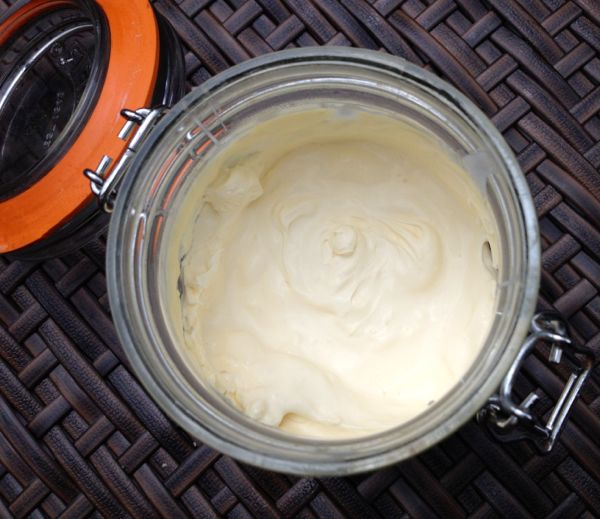A Savoury Cream Tea
 Confession time. I don’t have any opinions on the cream tea at all. I don’t love it, I don’t hate it, I’ll eat it if it’s there. I really don’t care if you put the jam first or the cream first. My only rule is don’t put raisins in your scones. No one likes raisins in scones.
Confession time. I don’t have any opinions on the cream tea at all. I don’t love it, I don’t hate it, I’ll eat it if it’s there. I really don’t care if you put the jam first or the cream first. My only rule is don’t put raisins in your scones. No one likes raisins in scones.
However I do like other things in scones. Cafe Renoir in Belfast (the one in Queen’s Street was a beloved day time hangout of mine when I was a teenager ) is the spiritual home of scone and offered up some great takes on them. I loved their pineapple and coconut ones and may have stampeded the queue when they had the white chocolate and raspberry ones. I also make treacle and ginger soda bread scones quite often at home. I am not a scone purist at all. In fact I find the plain scone a little, well, dull sometimes.
The problem with the plain scone is that they need to not just be nice, they need to be excellent. I can’t make them to save my life, churning out leaden lumps that set your teeth on edge with baking powder. I lack the light hand to make fluffy golden topped scones that people ooh and ahh over. I’ve tried and neither Delia nor the wife of a Northern Irish minister who has made thousands of scones for the church over the years have been able to set me on the right path.
So I’ve given up and turned my attention to the American biscuit instead. More savoury than a scone and often made to be flaky rather than fluffy, something about them appeals to me more for making at home than scones. I’ve tried a version that simply involved double cream and flour that were more like fudge than anything else and worked my way through those involving lard instead of butter and they’ve been good, but not great.
Then I came across this recipe from a woman in Tennessee with 5 stars reviews across the board (unheard of on the internet) and 17 tips to help make your biscuits great and the savoury cream tea was born. I topped these flaky biscuits with chorizo jam and thyme creme fraiche and suddenly I have many many opinions of cream teas again…
 Slow Cooker Chorizo Jam (makes 5 x 300ml jars)
Slow Cooker Chorizo Jam (makes 5 x 300ml jars)
(Loosely inspired by Eat Like a Girl‘s dedication to meat jams)
- 1 large white onion, finely diced
- 25g unsalted butter
- 500g cooking chorizo (or 250g chorizo and 250g streaky bacon)
- 1 tablespoon wholegrain mustard
- 1 tablespoon tomato puree
- 1 tablespoon brown miso
- 1 red chilli, finely chopped
- 150ml apple juice
- 60ml red wine vinegar
- 2 tablespoons honey or maple syrup
- 2 tablespoons brown sugar
- 1 tablespoon smoked paprika
- 1 tablespoon sweet paprika
- 1/4 teaspoon ground mace
- 1/4 white pepper
- 1/2 teaspoon ground allspice
- 1/2 teaspoon pul biber/Aleppo pepper (smoked Turkish chilli flakes)
This is the easiest thing in the world to make, which is a blessing since people are going to ask you for jars of it quite frequently. I imagine you can make it in a low oven of around 120℃ for about 4 hours, but you’ll need to check the liquid levels as it cooks to make sure it doesn’t cook dry. But since I am all about the slow cookers these days, I’ve barely remembered how to turn my oven on….
The chorizo jam is best made with soft cooking chorizo which is raw rather than the hard cured kind. I got mine at Brindisa but most of the big supermarkets will stock it. You could use the dried cured kind, but add about 75ml more apple juice to help it soften up.
The base of the jam is made with soft sweet caramelised onion to bring it all together and create a sticky jammy texture. Raw or barely cooked onion doesn’t work well here so don’t skip the first stage of the recipe.
Finely dice the onion to about 1cm dice and add to the slow cooker with the butter. Put the lid on the slow cooker and cook the onion on high for 4 hours or low for 8 hours. The slow cooker makes the best caramelised onions you can imagine so I quite often spent 20 minutes slicing or dicing a kilo or two of them and doing a massive batch. I then freeze portions or keep them in a sterilised jar in the fridge for up to a month and add them to dishes as needed.
Once the onion is caramelised, cut the chorizo into 1-1.5cm pieces and add to the slow cooker crock. The bacon should be thin strips if using. Add all the other ingredients and stir it all together well. I find adding them with the liquid in the middle helps bring it all together more easily.
Pop the lid on the slow cooker and cook it all together on low for 8-9 hours. I did mine overnight and when I woke up the house smelled wonderful. I then sterilised some jars in the oven and bottled it. Keep in the fridge for up to four weeks.
While you are making the chorizo jam, multi task with making the crème fraîche as well. It takes about 18 hours to be ready, but requires very little actual effort. Making it from scratch allows you to customise it by infusing it with the flavours you like. It would be wonderful with rosemary or sage or garlic for a savoury version or with rose, lavender or lapsang souchong for a sweet version. Simply substitute the equivalent amount of thyme for the flavour of your choice.
Homemade Thyme Crème Fraîche (makes 300ml)
- 300ml double cream
- 2 tablespoons dried or fresh thyme
- 2 tablespoons cultured buttermilk or sour cream
Put the double cream in a small saucepan and add the thyme (or flavouring of your choice) and gently heat the cream to 71℃ exactly. You will need a thermometer for this. Do not heat the cream higher than this heat. 71℃ is the magic number to activate cream or milk to thicken (or develop into cheese) and is sometimes known as ‘clabbering’ it. Some argue this is only the correct term if you are using raw unpastuerised milk, but since few words suit my Belfast accent better, I will continue to use it even if inauthentic.
Take the pan off the heat immediately and allow the cream to cool to 40℃. This will take around an hour and allows the thyme to infuse beautifully.
Wash out a glass jar in the hottest water you can handle and don’t dry it. Strain the cream through a sieve into it, leaving the thyme behind. Add the 2 tablespoons of buttermilk or sour cream and stir well. This ‘inoculates’ the cream and introduces the culture needed to turn from cream to crème fraîche. It is similar to the process of making yoghurt and both allow dairy products to last longer without spoiling.
Loosely cover the jar with its lid and then set it somewhere nice and warm to thicken up. I left mine right by the slow cooker that was making my chorizo jam as it gives out a nice waft of warmth. It will take about 12-14 hours to become a thick creamy texture that will hold the mark of the back of a spoon run through it. At this point, chill it for 4 hours to thicken up completely. Store in the fridge for up to 4 weeks.
Serve the chorizo jam and thyme crème fraîche on freshly baked biscuits you’ve split open. Your choice as to which you dollop onto the biscuit first. I’m not going near that controversy unless I’ve served an entire bottle of cava with my savoury cream tea and am too well refreshed to notice!





